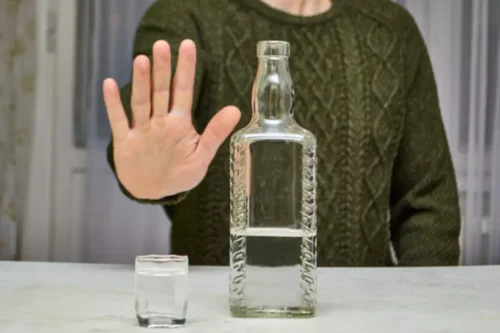Relapse prevention for addictive behaviors PMC

Taylor uses an app to watch her intake of calorie limit and does see positive outcomes to her new lifestyle. 3The key relapse episode was defined as the most recent use of alcohol following at least 4 days of abstinence (Longabaugh et al. 1996). 1Classical or Pavlovian conditioning occurs when an originally neutral stimulus (e.g., the sight of a beer bottle) is repeatedly paired with a stimulus (e.g., alcohol consumption) that induces abstinence violation effect a certain physiological response. After the two stimuli have been paired repeatedly, the neutral stimulus becomes a conditioned stimulus that elicits the same physiological response. As AVE is a form of all-or-nothing thinking, some may argue that it is a person’s outlook, not abstinence itself, that is harmful. But in cases in which a person is prone to this cognitive distortion, abstinence may not be the healthiest approach to take.

Definitions of relapse and relapse prevention
Relapse prevention initially evolved as a calculated response to the longer-term treatment failures of other therapies. The assumption of RP is that it is problematic to expect that the effects of a treatment that is designed to moderate or eliminate an undesirable behaviour will endure beyond the termination of that treatment. Further, there are reasons to presume a problem will re-emerge on returning to the old environment that elicited and maintained the problem behaviour; for instance, forgetting the skills, techniques, and information taught during therapy; and decreased motivation5. Addressing the AVE in the context of addiction treatment involves helping people develop healthier coping strategies and challenging negative beliefs that contribute to addiction. Additionally, individuals may engage in cognitive distortions or negative self-talk, such as believing that the relapse is evidence of personal weakness. An individual progresses through various stages of changes and the movement is influenced by several factors.
AVE in the Context of the Relapse Process
All in all, short-term abstinence as a temporary intervention need not be conflated with long-term abstinence as an indefinite treatment goal and can be regarded as a separate intervention. For gambling disorder, controlled gambling is increasingly being advocated as a viable goal alongside traditional abstinence treatment goals (e.g., Stea, Hodgins, & https://ecosoberhouse.com/ Fung, 2015). Beyond its use as a methodological tool, the possibility of abstinence also being a potentially useful intervention for problematic behaviors needs to be given due consideration within behavioral addiction treatment research. If a behavior is causing problems, abstaining from the behavior appears (at face value) to be a logical solution.
Factors That Contribute To The Abstinence Violation Effect
We summarize historical factors relevant to non-abstinence treatment development to illuminate reasons these approaches are understudied. Ark Behavioral Health Is an accredited drug and alcohol rehabilitation program, that believes addiction treatment should not just address “how to stay sober” but needs to transform the life of the addict and empower him or her to create a more meaningful and positive life. We are dedicated to transforming the despair of addiction into a purposeful life of confidence, self-respect and happiness. We want to give recovering addicts the tools to return to the outside world completely substance-free and successful.
Effects of voluntary short-term abstinence from alcohol on subsequent drinking patterns of college students
Addiction and related disorders are chronic lapsing and relapsing disorders where the combination of long term pharmacological and psychosocial managements are the mainstay approaches of management. Among the psychosocial interventions, the Relapse Prevention (RP), cognitive-behavioural approach, is a strategy for reducing the likelihood and severity of relapse following the cessation or reduction of problematic behaviours. Here the assessment and management of both the intrapersonal and interpersonal determinants of relapse are undertaken. This article discusses the concepts of relapse prevention, relapse determinants and the specific interventional strategies.
Journal of Studies on Alcohol
Marlatt, based on clinical data, describes categories of relapse determinants which help in developing a detailed taxonomy of high-risk situations. These components include both interpersonal influences by other individuals or social networks, and intrapersonal factors in which the person’s response is physical or psychological. Administrative discharge due to substance use is not a necessary practice even within abstinence-focused treatment (Futterman, Lorente, & Silverman, 2004), and is likely linked to the assumption that continued use indicates lack of readiness for treatment, and that abstinence is the sole marker of treatment success. Many clients report that activities they once found pleasurable (e.g., hobbies and social interactions with family and friends) have gradually been replaced by drinking as a source of entertainment and gratification.

The reformulated cognitive-behavioral model of relapse

- The study was especially notable because most other treatment readiness measures have been validated on treatment-seeking samples (see Freyer et al., 2004).
- Despite the empirical support for many components of the cognitive-behavioral model, there have also been many criticisms of the model for being too static and hierarchical.
- For example, a person who limited their drinking would not be practicing abstinence, but a person who refused all alcoholic beverages on a long-term basis would be abstaining from drinking.
- By providing comprehensive care, our treatment programs create a supportive environment in which our clients can build a solid foundation for lasting sobriety.

